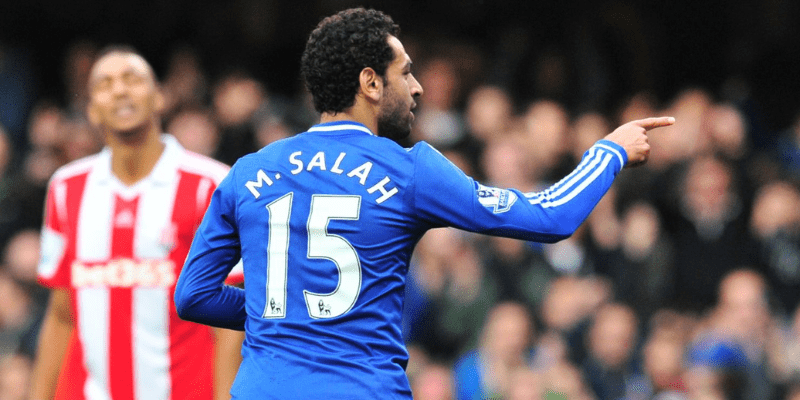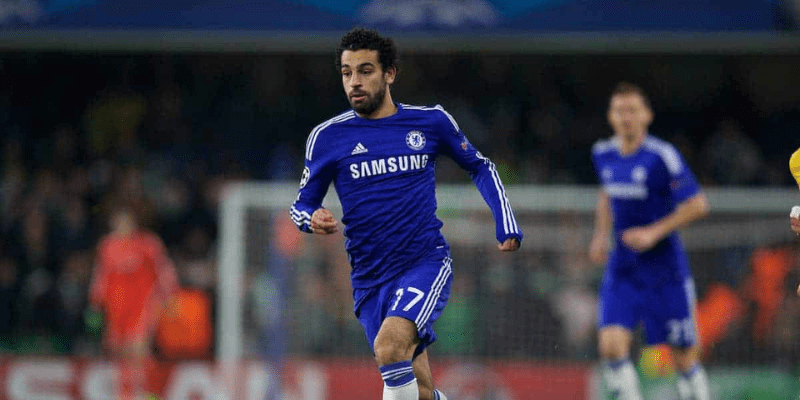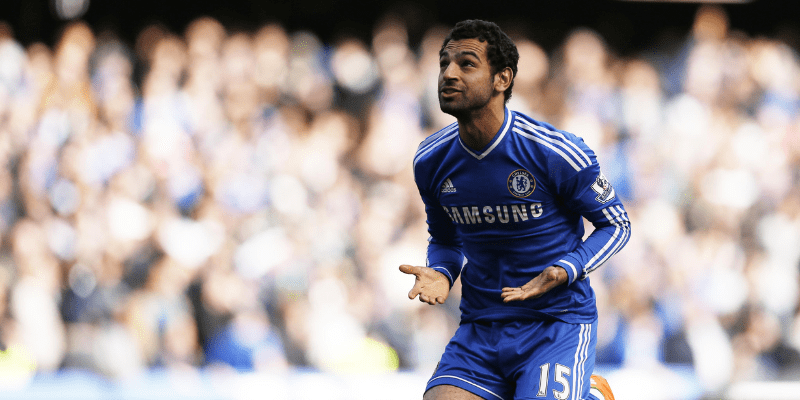In the world of football trivia, this question pops up often: did Salah play for Chelsea? The answer is yes — but the story behind that stint is far more complex than many fans realize. Join IndiGoal as we rewind time and uncover how Mohamed Salah’s career intersected briefly with Chelsea, why his time in blue didn’t take off, and how his journey after leaving Stamford Bridge shaped him into the superstar we know today.
Early rise and move to Chelsea

Mohamed Salah’s ascent began in Egypt, before his talents carried him to Europe. After impressing at Basel in the Swiss Su, Chelsea snapped him up in January 2014 for a reported fee around £11 million. His arrival at Stamford Bridge was greeted with speculation: could this be the next jewel in Chelsea’s glittering crown of signings?
At Chelsea, Salah had competition. The squad was stacked with attacking talent, and opportunities were limited. Over 2013–14 and 2014–15, he made just 13 Premier League appearances for Chelsea, scoring 2 goals and providing 1 assist. In many of these matches, he was used as a substitute or played sporadically, never really given a consistent run to build rhythm.
Salah later admitted that part of his decision to join Chelsea came under the influence of advice that he would get chances there, and in hindsight, he acknowledged that maybe things didn’t turn out as he’d hoped. pireofthekop.com])
Challenges, loans, and exit. With Chelsea’s aspirations and squad depth, he found himself behind more established attackers in the pecking order.
In the 2015–16 season, Chelsea loaned him out to Fiorentina — an effort to get him more game time — which proved more fruitful: 16 appearances and 6 goals. *. The next loan took him to Roma, where he really began to flourish, scoring 14 in 34 Serie A matches.
Jose Mourinho, who was Chelsea manager during Salah’s time, later explained in interviews that he felt Salah—and another talent, Kevin De Bruyne—left because they did not want to “wait” for a breakthrough at Chelsea. Mourinho suggested the players craved more immediate roles elsewhere. Some analysts argue Chelsea’s talent pool and strategy didn’t favor gradual integration of young stars.
By mid-2016, Roma made his move permanent, and the final chapter of his Chelsea story was closed. kipedia])
Performance at Chelsea: A statistical snapshot
Though his time was short, Salah’s Chelsea stats offer insight into how constrained his impact was:
| Metric | Value |
| Premier League Appearances | 13 |
| Goals | 2 |
| Assists | 1 |
| Goal contributions per game | ~0.23 |
These numbers reflect a player still adapting, with little opportunity to settle into the squad or demonstrate his full potential.
It’s worth noting that when Salah later played against Chelsea as a Liverpool star, he found more success: across his Premier League career, he has 5 goals and 4 assists in 15 matches versus Chelsea.
Life after Chelsea: A path of rebirth

Leaving Chelsea proved to be a turning point rather than a setback. At Roma, Salah reinvented himself, blending speed, scoring instinct, and consistency. His performances in Serie A earned him a move to Liverpool in 2017, where he became one of the Premier League’s most lethal attackers.
At Liverpool, Salah’s career exploded. He’s become one of the club’s greatest ever forwards, breaking records, winning titles, and earning global acclaim. His chemistry in attack, durability, and consistency have made him a symbol of excellence.
Interestingly, Chelsea fans sometimes reflect on how the club “lost” him. Analysts point out that he and De Bruyne are perfect examples of talents that Chelsea failed to fully integrate — talents that later reached their peak elsewhere.
Why Salah’s Chelsea tenure didn’t click
Several factors converged to limit Salah’s success at Chelsea:
- Intense competition: Chelsea’s forward options were stacked, leaving little room for a young talent to break through.
- Limited patience or opportunities: The club preferred more proven names over nurturing slower-developing talent.
- Lack of continuity: Loans disrupted his integration, preventing a steady adaptation to Premier League demands.
- Tactical mismatch: At Chelsea, the style and role he was given didn’t fully harness his strengths in speed, drift, and finishing.
- Player ambition: Salah reportedly wasn’t willing to remain in limbo; he sought regular playtime, and moved where that was available.
Legacy and fan debates

To this day, fans and pundits ask: what if Salah had been given a fair, stable opportunity at Chelsea? Could he have become a Blues legend instead of a Liverpool icon? The rivalry between Chelsea and Liverpool now includes Salah as a case study in transfer gamble and talent valuation.
Final Thoughts
Yes, Salah played for Chelsea, but his spell at Stamford Bridge was brief, unremarkable statistically, and ultimately transient. The experience, though difficult, became one of the building blocks of his journey to stardom. Today’s Mohamed Salah — prolific, consistent, and iconic — owes part of his evolution to that early challenge.
If you enjoy diving into football careers, transfers, stats, and the “what ifs” of the sport, keep watching IndiGoal for more deep dives. Want me to compare how Salah’s Chelsea stint stacks up against other stars who “failed” early before flourishing? Just say the word.



